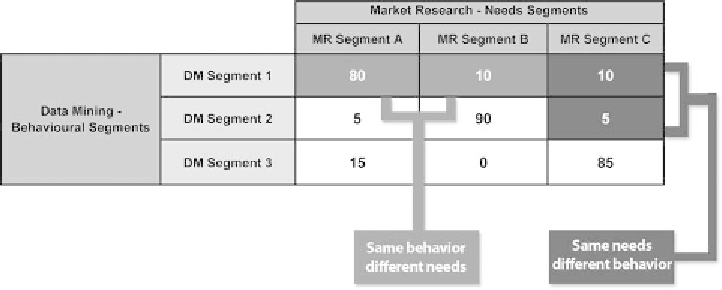Database Reference
In-Depth Information
demographic and/or needs/attitudinal segments. While each approach helps
with understanding certain aspects of the customers, combining the approaches
provides deeper insight.
For instance, provided a behavioral data mining segmentation has been
implemented, random samples can be extracted from each segment and,
through surveys and/or qualitative research and focus group sessions, valuable
insight can be gained concerning each segment's needs and preferences.
Alternatively, the data mining and the market research approaches can be
implemented independently and then cross-examined, not only as a means for
evaluating the solutions, but also in order to construct a combined and integrated
segmentation scheme which would provide a complete view of the customers.
In conclusion, combining data mining and market research techniques for
customer segmentation can enable refined subsequent marketing strategies,
based on a thorough understanding of customer behavior and needs, as shown
in Figure 5.6.
Consider customers belonging to the same behavioral segment but having
diverse needs and perceptions. This information can lead to tailored marketing
strategies within each behavioral segment.
5.
Labeling the segments based on their identified profiles:
The profiling
and interpretation process ends with the labeling of the identified segments
with names that appropriately designate their unique characteristics. Each
segment is assigned an informative and revealing name, for instance ''Business
Travelers,'' instead of ''Segment 1.'' The naming of the segments should take into
account all the profiling findings. These names will be used for communicating
the segments to all business users and for loading them onto the organization's
operational systems.
Figure 5.6
Combining data mining and market research-driven segmentations.

Search WWH ::

Custom Search